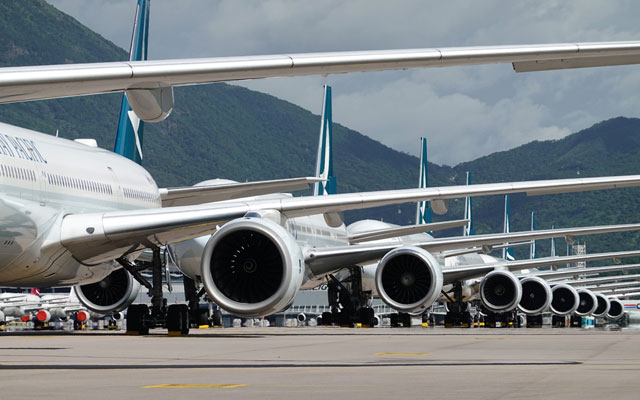
The Hong Kong government has thrown a HK$27.3 billion (US$3.5 billion) lifeline to the city’s flag carrier Cathay Pacific, as part of a HK$39 billion recapitalisation plan aimed at keeping the airline afloat amid the pandemic that has thrown global airlines into a tailspin.
The sum includes the issuance of HK$19.5 billion in preference shares with detachable warrants, a HK$11.7 billion rights issue, and a HK$7.8 billion bridge loan facility.

Cathay Pacific began talks with the government to seek support for the aviation sector through an investment in the Cathay Group two months ago, according to a Legislative Council paper. The airline’s flights have been drastically cut by 97 per cent in recent months, as compared to pre-Covid-19 levels.
Both Cathay Pacific and Cathay Dragon only carried a total of 18,473 passengers last month. In the first five months of 2020, the number of passengers carried fell by 71.2 per cent, against a 59.5 per cent decrease in capacity as compared to the same period for 2019.
To the Hong Kong International Airport (HKIA), the failure of the Cathay Group to sustain its operations would mean an immediate loss of the network that it has established through the airline group over many decades. The network includes 49 passenger points and 14 all-cargo points served by Cathay Pacific exclusively pre-Covid-19.
Without the air connectivity, demand for the HKIA’s transit/transfer services, which contributed 29 per cent of the airport’s passengers in 2019, is expected to drop significantly.
In the absence of a well-established home-based flag carrier, reliance on non-local carriers will not be sustainable for the long-term development of HKIA, as the bases and foci of these carriers may not be in alignment with the best longer-term interests of Hong Kong.
Apart from refinancing, Cathay Pacific has confirmed that a submission has been made to the government’s US$10.3 billion Employment Subsidy Fund announced in March. This may benefit its 27,000 employees in Hong Kong and cover the maximum wage subsidy per employee at HK$9,000 per month for six months. During this period, employers cannot lay off staff.
Hailing the government’s bailout of Cathay Pacific, industry players called for the strengthening of the partnership between the airline and travel agents along the path to recovery.
Gray Line Tours managing director, Michael Wu, expressed hopes that the airline can provide travel agents with greater ticketing flexibility, as currently, if the group ticket fare quota is exceeded, agents have to pay the rest of the fare at FIT rate. He also urged the airline to sell tickets through agents rather than selling directly to consumers via its online platform.
“We’d like Cathay Pacific to treat us as business partners. The city needs more visitors and nobody can stand alone to fight for survival. We stakeholders should work together in this tough time,” he added.
Travel Industry Council’s chairman, Jason Wong, also urged Cathay Pacific to lend greater support to the travel trade, including traditional agents, noting that the use of public funds to bail out the airline means that there will be a greater expectation on the airline to fulfil its social responsibility.
The Society of IATA Passenger Agents’ chairman, Tommy Tam, opined that Cathay Pacific should mend its relationship with agents. “Before the pandemic, Cathay Pacific pushed NDC, direct marketing and loyalty programmes that were not favourable to agents’ business.”
He added that the airline should segment its products clearly, with Cathay Pacific serving the high-yield, longhaul market; while Cathay Dragon and HK Express, the low yield or tour package groups.



















